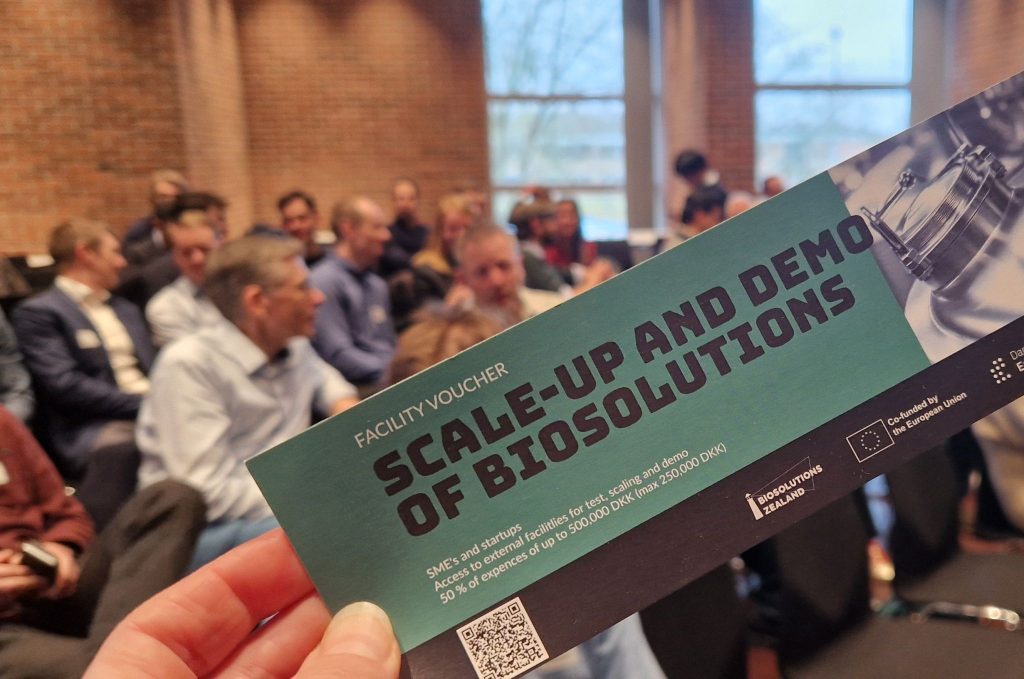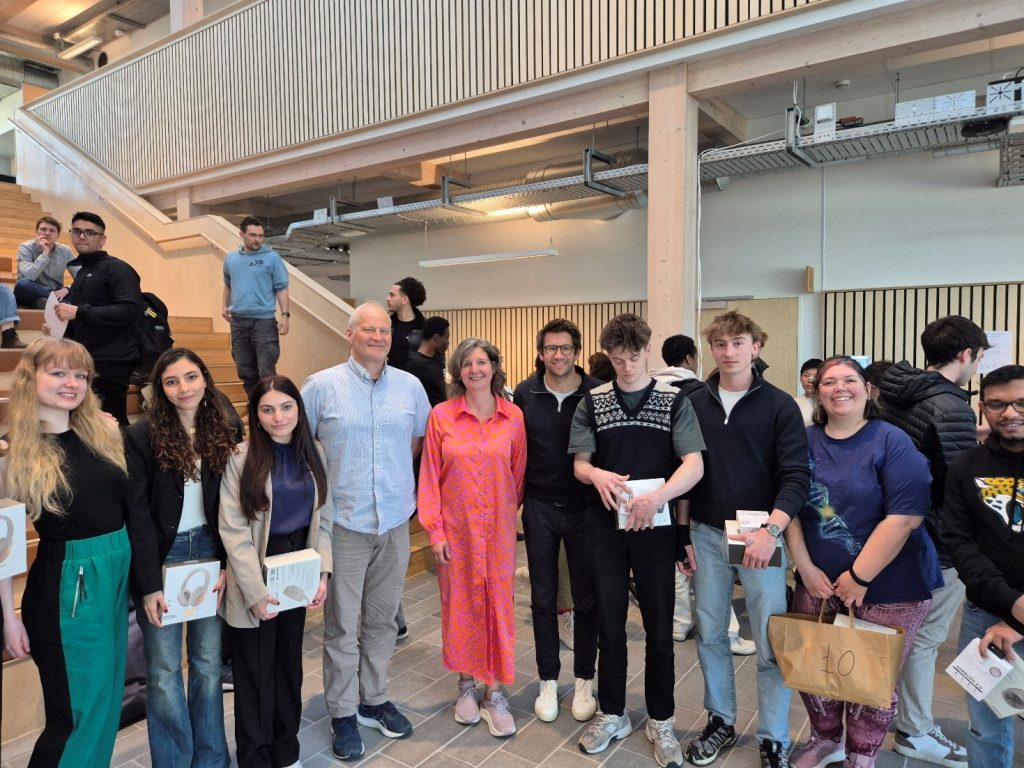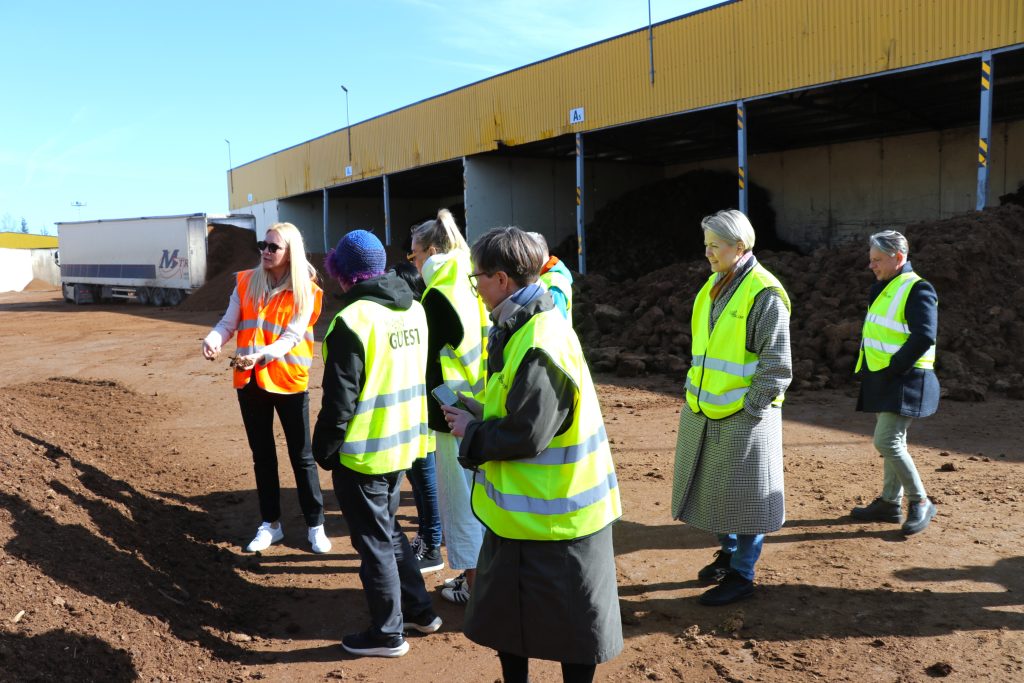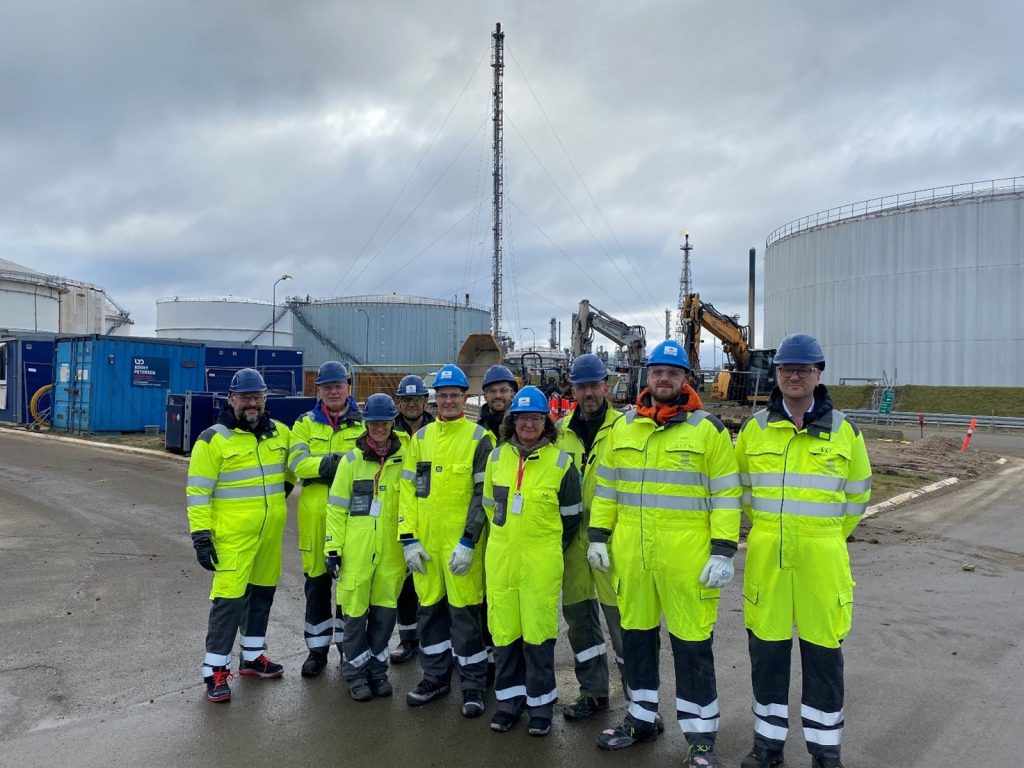As the days grow longer and spring begins to bloom across Kalundborg, we’re excited to bring you the latest updates from the Kalundborg Symbiosis secretariat. This season marks a time of renewal; not just in nature, but also in our collaborative efforts toward a more circular future.
From all of us at the secretariat, we wish you a joyful and sunny Easter holiday!
———————————————————————————————————————————————————————————–No. 7, April, 2025
Supporting SMEs in the Green Transition: Highlights from the Scale Up Symposium
On March 19, Lisbeth and Sif participated in the Scale Up Symposium organized by the Business Lighthouse for Biosolutions.
The event was held at the Biosolutions Technology Centre at the Danish Technological Institute and was conducted as part of the Business Lighthouse Biosolutions Zealand, which is supported by the Danish Board of Business Development and the EU, and in which Symbiosen participates.
There was plenty of dialogue, knowledge sharing, and focus on how to create the best conditions for SMEs aiming to develop and scale up biosolutions. Participants included representatives from scale-up facilities, companies, universities, and many others — in total, about 150 attendees.
To truly leverage the potential of the green transition, companies must have access to the right facilities and support to scale their solutions from pilot stage to full production. That’s why the Business Lighthouse offers a voucher scheme, where companies can receive support for scaling up at physical facilities. more about the opportunities in the project.

At the event, attendees had the opportunity to meet some of these facilities, including FermHub, 21st Bio, the Danish Technological Institute, and several universities.
Please feel free to contact us if you or one of your partners would like to learn more about the opportunities in the project.
Case Competition
The Kalundborg Symbiosis was one of the featured cases at the Biotech Case Competition, where 55 passionate students from Denmark and Germany dedicated their weekend to tackling real-world challenges.
Hasse Milter from Kalundborg Forsyning and Mette Wendel presented a case focused on water-related challenges within the Kalundborg Symbiosis partnership – a new fictional reality shaped by new companies moving into the area, increasing demand on infrastructure, and the development of new residential zones; all challenging the demand for water supply.
Three student groups worked intensively on the symbiosis case, generating ideas, building models, and preparing both an abstract and a pitch addressing the issues. It was a pleasure to be part of this exciting event and to witness how the students embraced the symbiosis mindset – realizing how collaboration can benefit all parties while respecting planetary boundaries. Hearing them articulate the value of cooperation from an academic perspective made us very proud.

The competition was tough. The Kalundborg Symbiosis case was narrowly beaten by another innovative project on sepsis prediction. The third winning team worked on a case from Novo Nordisk, focused on process optimization.
GreenIndustrialAreas project: Riga partner meeting recap
Last week, GreenIndustrialAreas project partners met in Riga to plan the initiative’s final year. Representing our team were Nadejda and Sif, who joined collaborative discussions on upcoming activities.
The main focus was the project’s toolbox of energy-efficient technologies, designed to help industrial areas become more sustainable. Partners also explored criteria for a green certification scheme, highlighting the complexity of measuring emissions at the industrial area level.
The group visited the Latvian pilot site, one of the world’s largest peat extraction areas, managed by Laflora Latvia. As peat harvesting phases out, Laflora aims to transform the site into a green industrial hub, featuring a wind farm (expected to supply ~5% of Latvia’s energy), greenhouses, and other eco-friendly ventures.

Asked about pursuing certification, Laflora simply said: “It’s something our customers want.”
The GIA project is co-financed by Interreg Baltic Sea Region.
Kalundborg Symbiosis: CO₂ Working Group
The Kalundborg Symbiosis includes several dedicated working groups, each focusing on different areas of collaboration. This section highlights the work of the CO₂ group.
The CO₂ group meets regularly to exchange knowledge, discuss key developments, and visit one another’s facilities. These meetings create a valuable platform for exploring new opportunities and identifying synergies across ongoing projects. One example includes assessing how value chains related to carbon capture in the CO₂ Storage Kalundborg project might be further expanded.
The group is chaired by Niels Peter K. Nielsen from Ørsted and brings together a broad range of stakeholders. Participating partners from Kalundborg Symbiosis include Ørsted, Kalundborg Bioenergy, Kalundborg Refinery, Kalundborg Utility, and Kalundborg Municipality. Additional participants include Evida, Kalundborg Harbor, and Gas Storage Denmark.

The photo was taken during a site visit to Kalundborg Refinery on February 7.
Kalundborg Symbiosis at Transform in Sydney
On March 19 and 20, the Green Building Council of Australia held its annual conference, TRANSFORM, with a special focus on sustainability. In this context, Kalundborg Symbiosis was invited to be the keynote. Mette Wendel had the privilege of traveling to Australia to represent the symbiosis.
The interest in Kalundborg Symbiosis as a showcase was high, leading to significant engagement and a lot of new followers on LinkedIn. The following takeaways from one of the posts capture the essence of the presentation, as well as the values and approach of Kalundborg Symbiosis, very well:
– People power drives change – technology is just part of the solution
– Start small to advance circularity – every step counts
– The more you share, the more you gain
– Australia’s construction industry can learn from regions already putting circularity into practice
– A timely and insightful session to start the day!

The sustainability team at the Green Building Council of Australia’s conference, TRANSFORM, invited Mette to record a podcast on Kalundborg Symbiosis and sustainability – an inspiring conversation that will be published before summer.


